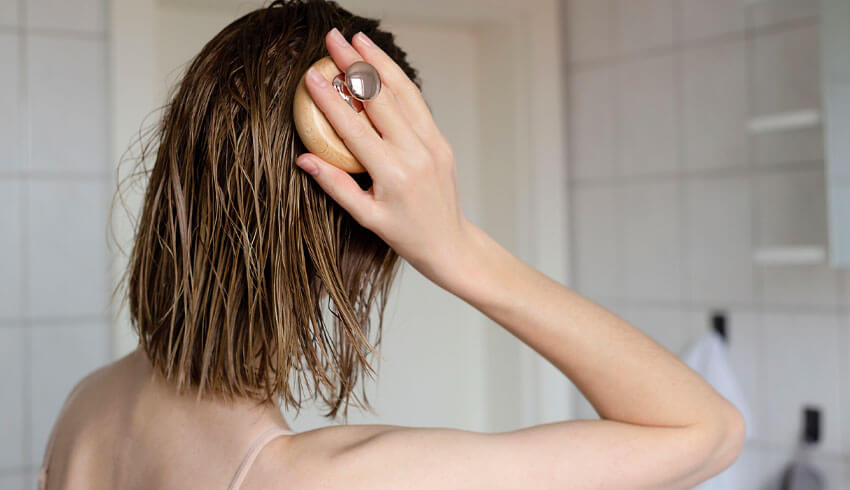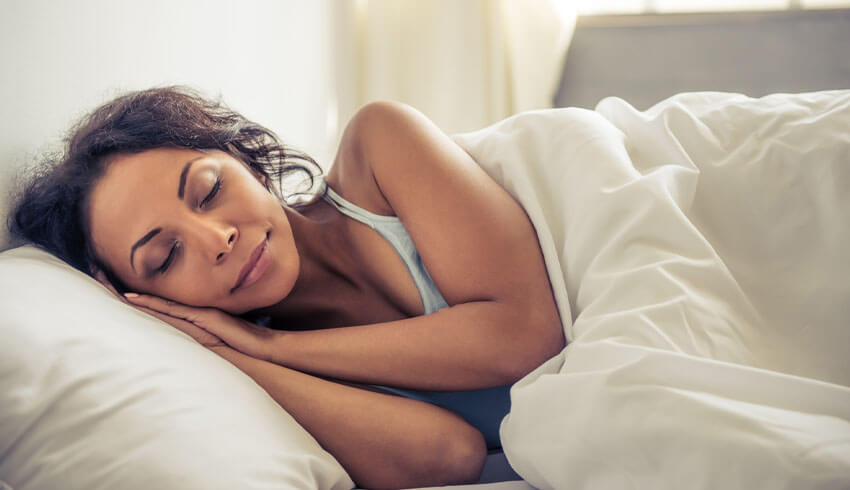
When it comes to skin care, there’s an area that is often overlooked — the scalp. And while the skin on your scalp might not be top of mind, a regular massage can do wonders for circulation, relaxation and overall scalp health. Whatever your goal, the simple art of head massage is gaining popularity because of its many benefits.
Read on to find out the benefits of scalp massage and how you can incorporate this technique into your self care routine.
Scalp Massage: What Is It & What Are The Benefits?
Have you ever noticed how relaxing it is to have a gentle head rub when you have your hair washed at the salon? There’s a reason for that: Stimulating the scalp has an effect on the parasympathetic nervous system. This is a part of the nervous system that goes into energy-saving mode when your body is quietly resting and digesting (as opposed to “fight or flight” mode). Massaging the scalp brings down the level of the stress hormone cortisol.
Besides eliminating stress, there are more scalp massage benefits, which may explain why scalp massagers and the ancient Chinese scalp massage technique of gua sha are getting so much play on social media right now. Scalp massage causes the blood vessels nearest the surface, which map across the front and top of your head and temples, to open up. This amplifies blood flow and oxygenation in the soft, connective tissues right under the skin where your hair follicles are.
Not only does it bring down your tension level, scientific studies show that regular scalp massage creates a healthy, nourishing environment for hair to grow thicker and more fully. Massaging is believed to stretch out the cells of hair follicles, which causes them to produce more robust strands.
Which Tools Are Good For Scalp Massage?
The Gua Sha Tool
Gua sha is a centuries-old massage technique that stimulates the lymphatic vessels under the skin and promotes blood circulation. “Gua” means “scrape” or “scratch” and “sha” is the word for the reddishness that results from the treatment.
Gua sha massage stones for the face tend to be carved out of semi-precious gemstones like jade, aventurine, rose quartz, tiger’s eye or black obsidian, and they are flat with some rounded edges that are used to “scrape” the skin. For the scalp, gua sha can be done with specially designed combs that generally curve to naturally fit your hand. Gua sha combs have fewer and thicker teeth than ordinary combs. Like the gua sha face massage stones, the scalp massagers are often carved out of jade, rose quartz or agate or out of smooth, lustrous woods like neem or sandalwood. The important factor in choosing a gua sha comb is that it feels good in your hand and against your scalp.
To reap the most benefits from gua sha scalp massages, a daily treatment is ideal, but performing one a few times a week can be beneficial as well. Timing it before each hair wash is a great place to start, especially when using oil that needs to be washed out. Of the 361 classic acupuncture points on the body, which are what traditional Chinese medicine describes as access points to the body’s flow of “qi” or “life force,” about 60 are located on the scalp.
The point you should pay the most attention to in your gua sha ritual is what is viewed as the most powerful acupoint on your scalp: It is roughly at the crown of your head where the imaginary straight line running between the tops of both ears intersects with the straight line running from the center of your forehead to the back of your head.
How To Use A Gua Sha For Scalp Massage
Step 1
Start by running your usual hairbrush through your hair to untangle any knots.
Step 2
Beginning with your natural part closest to the center of your hair, apply a few drops of the Facial Recovery Oil or Rosehip Triple C+E Firming Oil to your scalp.
Step 3
Applying gentle pressure, slowly run your gua sha comb from the front and middle of where your hairline starts along this central part and through to the back of your head, continuing down your neck.
Step 4
Section off your hair about an inch to the right of the central part that you just combed through and apply a few drops of oil to the scalp. Push your gua sha comb gently and firmly from the starting point of this section, just right of center, all the way to the back of your head and down your neck.
Step 5
Now, section your hair one inch to the left of your central part, apply a few drops of oil and repeat the process.
Step 6
On the right side of your head, section off your hair about an inch above your ear, apply a few drops of oil, and follow the same procedure from the hairline to the back of your head and neck.
Step 7
Finally, do the same on the left side of your head, an inch above your ear, arcing your gua sha comb widely around the ear to the nape of your neck.
Product Picks
The Scalp Massaging Brush
Another popular scalp massage tool is the scalp massaging brush. Available in different shapes and sizes, it is generally round with silicone bristles (that look like little spikes) and an ergonomic handle to make it easy to grip and move around.
How To Use A Scalp Massaging Brush On The Scalp
Step 1
Start with dry hair, using the scalp massager to gently comb it out (if you brush out your hair hanging your head upside down, that boosts blood flow even more).
Step 2
Sit up, put a towel around your shoulders, and apply a few drops of Facial Recovery Oil or Rosehip Triple C+E Firming Oil to your scalp.
Step 3
Work the oil all over your scalp with your scalp massager, using circular movements and medium pressure.
Step 4
Now, shower time! Wet your hair, apply shampoo and gently scrub your scalp with the massager using circular movements. A wet scalp massage is particularly effective at removing dead skin cells, but be careful not to overdo it: Three times a week is more than enough.
Eminence Organic Skin Care Products For Scalp Massage
Facial Recovery Oil: Enhance your gua sha scalp massage with the fragrant blend of clary sage oil and ylang ylang, which can help you feel calm and relaxed.
Rosehip Triple C+E Firming Oil: If your scalp tends to be dry, the sea buckthorn oil and rosemary leaf extract hydrate while jojoba oil helps restore your skin's natural moisture.
Both products can be left on for 30 minutes (or overnight) and should be shampooed out after application and before styling hair. Scalp massage can be performed up to three times a week, however we recommend only using Facial Recovery Oil or Rosehip Triple C+E Firming Oil on the scalp one to two times per week.
In addition to your home care routine, why not incorporate a scalp massage into your next spa treatment? Visit our Spa Locator and find out more from an Eminence Organics Spa Partner near you.





